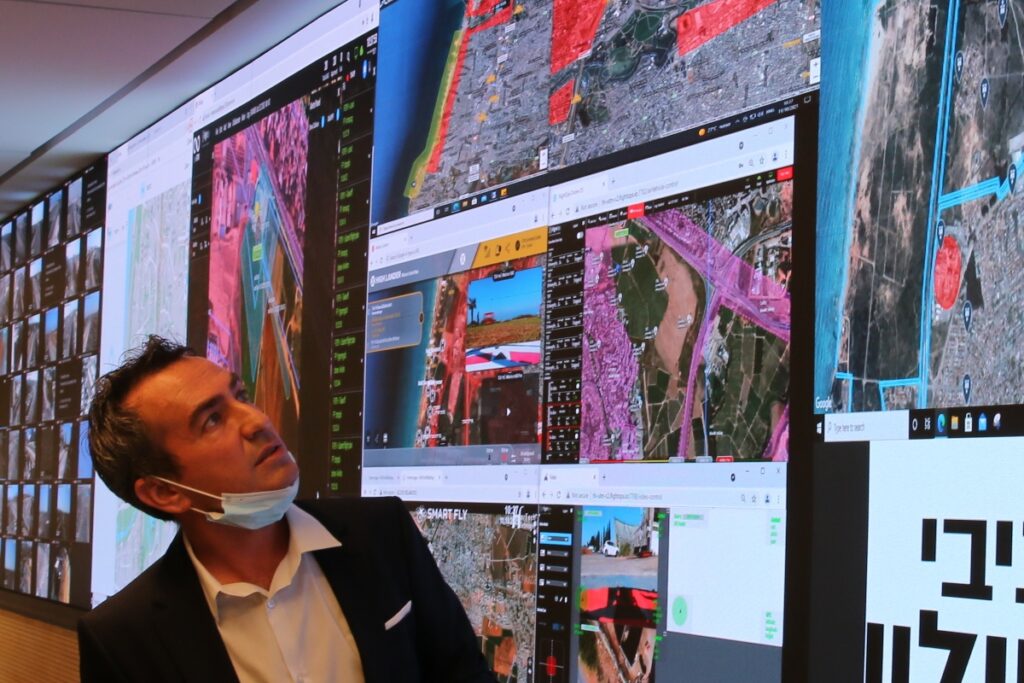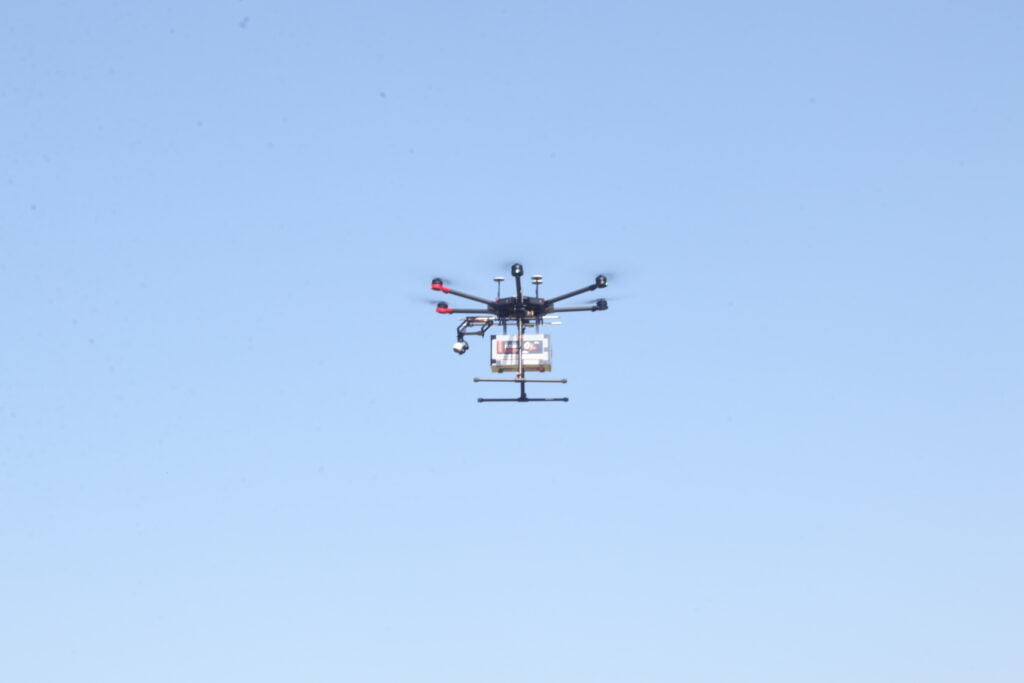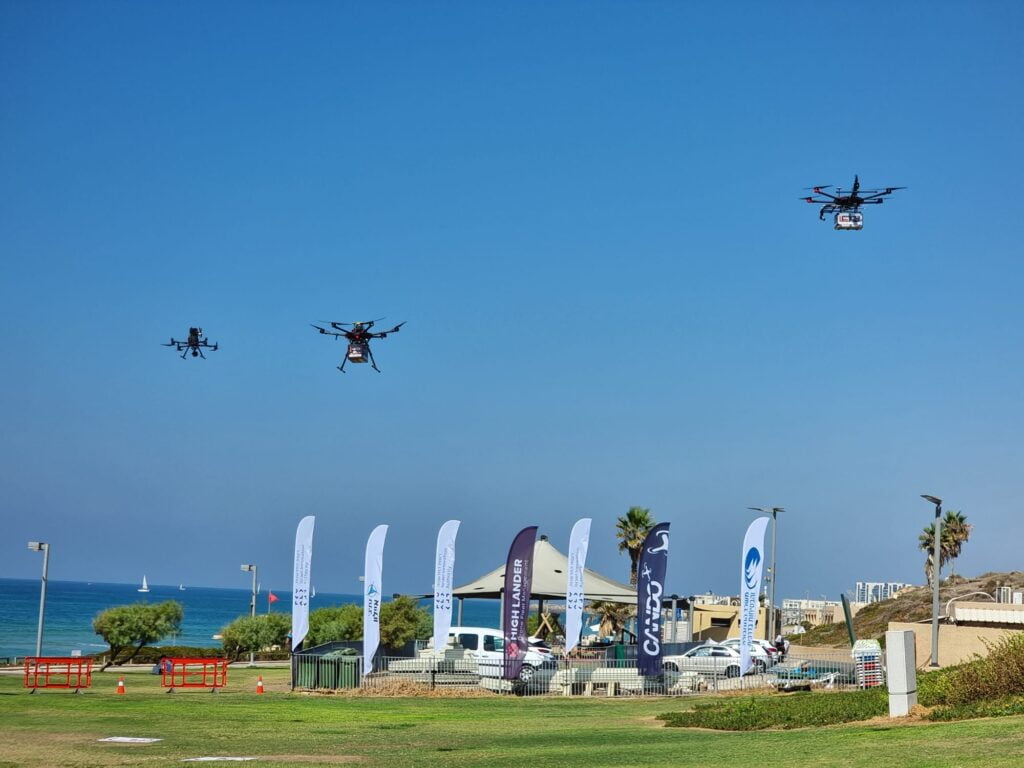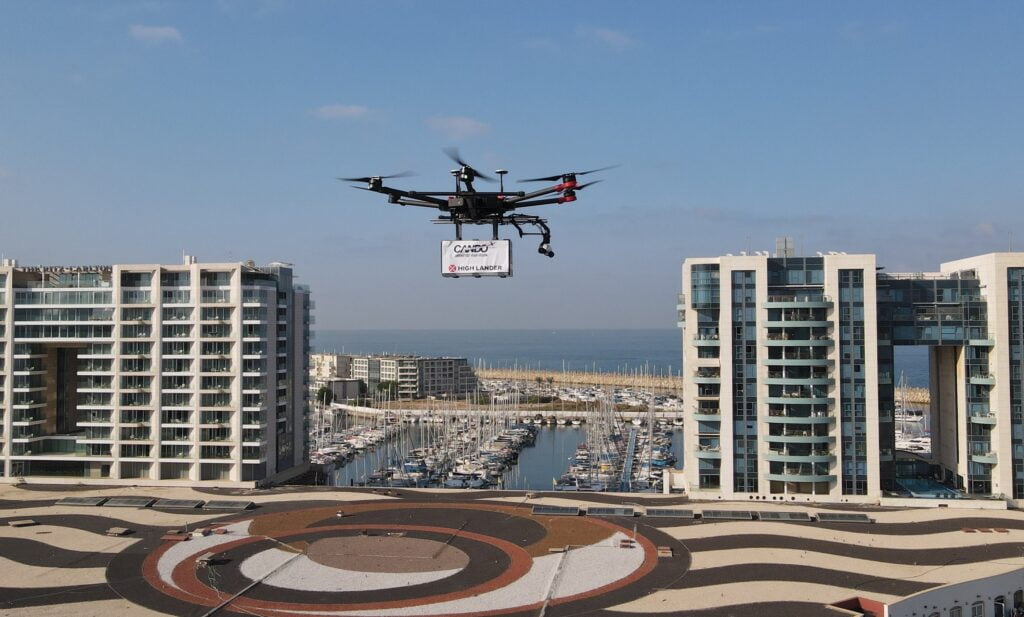Israel is at the forefront of drone technology – both military and commercial – and the latter was given its day in the sun as the third demonstration (of eight stages) of the Israel National Drone Initiative (INDI) was revealed on Monday.
INDI is a public-private joint initiative between a number of different local organizations, including the Israel Innovation Authority, Ayalon Highways Co LTD, Civil Aviation Authority of Israel, Israel Transportation Ministry, and Israel Center for the Fourth Industrial Revolution (C4IR) with the support of the World Economic Forum.
Over the course of this two-year pilot project, drones will fly in thousands of sorties, all under the watchful eye of the Ayalon Highway Air Traffic Control Center. In addition, there is coordination with the Israel Air Force to ensure that at no time does the use of these drones affect the country’s protection.

The demonstration represented a number of firsts, including drones flying simultaneously on the same Israeli-controlled system, both in and around Tel Aviv, and Sao Paolo, Brazil. Additionally, it was also the first time that separate companies and separate service providers all flew at the same time – a mark of collaboration that helped to showcase the potential diversity within the market.
The whole day of demonstrations was a glimpse into the likely not-too-distant future as the groundwork is prepared to enable round-the-clock use of drones, crisscrossing the country delivering all manner of items, such as food, medicines, drinks, and other packages.
It was also an opportunity to expand the area of operation from the coast to the center and also less densely populated parts of the periphery. “In the framework of the third demonstration, we will take another step towards the integration of technology, regulation, and public support, moving closer to creating an active model that will allow end consumers to enjoy cargo delivery via drones across the country while placing an emphasis on safe, efficient, and speedy operation,” said Israel Innovation Authority CEO, Dror Bin.
The move to flying over cities represents an evolution in the INDI, which initially began testing drones over fields in rural areas. “When we got more confident, we started flying in cities,” remarked Libby Bahat, Head of Aerial Infrastructure Department at the Central Aviation Authority.
Coordination is key
At the Ayalon Highways headquarters in Tel Aviv, there are banks of screens on the wall that show the movement of traffic on one of Israel’s most heavily used and congested roads. A few feet from it there were maps with bands of color projected onto the wall, as well as real-time video images from cameras attached to the drones. There were bands colored purple, which means that they are crowded residential neighborhoods and during the demonstration at least, drones were not permitted to land there.
SEE ALSO: Two-Year Pilot Positions Israel As Drone Delivery Force
“We have to liaise with a number of agencies and organizations before we fly,” Bahat continued. “We have to coordinate with the local municipality, with the airforce and even the nature authority, to check the aviation route and ensure that our activities neither overly disturb residents or wildlife.” There is also a number the public can call if they have a complaint about drones making too much noise.
The aspect of needing to coordinate with the airforce is an interesting one. In the future, service providers could be connected to the airforce system, which would be able to update in real-time and ensure the safety of any military and commercial craft in the air at the same time. In addition, when fully operational, the system will be able to prioritize the various drone flights and clear the airspace when a large aircraft enters or when the aircrafts operated by the emergency services enters in the event of an emergency.
Sign up for our free weekly newsletter
Subscribe
Safety and security is a key feature of the system and the service providers deliberately test collision courses to ensure that through the algorithms and AI, drones can actually respond to that error and not collide in mid-air. “We need to fly the safest route possible,” Bahat explained. In addition, around cities, the drones use extra precautions such as parachutes to help slow the aircraft down, especially when they can potentially reach speeds of 65km/h.
“The Civil Aviation Authority has been a partner to the National Drone Initiative from the day of its establishment. The goal of the CAA’s partnership is to learn the future regulatory requirements in parallel to giving approval to the initiative’s security procedures.” said Civil Aviation Authority Director, Joel Feldschuh.”
The CAA staff who are partners in the planning and the implementation of the initiative are experts in the different fields of flight regulation – registering air companies (aerial operators), registering pilots of unmanned aerial vehicles, registering aircrafts and control systems in terms of engineering and operationally and in the areas unique to this initiative: autonomous management of the aerial space. The CAA is engaged in the development of the Israeli aerial space to integrate the innovative capabilities of the UTM [Unmanned Aircraft System Traffic Management] world – management of autonomous, smart and mechanized aerial traffic for unmanned aerial vehicle systems, whose goal is to allow more extensive operation in using UAVs that serve the public with the highest level of security,” he added.
Although on the day of the demonstration the system was capped to a potential maximum of 250 drones in the air at any one time, the end goal is to construct a network that will support an unlimited number of drones, all capable of flying to precise locations and avoiding each other as they fly around the country.

At the demonstration of the drones’ abilities on a hill overlooking Israel’s Mediterranean coast between Tel Aviv and Herzliya, Alon Abelson, CEO and co-founder of High Lander, which facilitates advanced aerial command and control systems to manage a fleet of drnes and currently operates one of the world’s leading aerial command and control systems, explained that another of the day’s firsts was the sending of food – in this case, sushi – via an app between the two cities in an end-to-end process.
Abelson also stressed the requirements about public safety and some aspects of security. The High Lander system can trace different drones with different companies at the same time. It can also assess drone threats to installations or sensitive infrastructure, creating physical perimeter security. Its drones can fly autonomously and can track and follow the route of a foreign object.

The initiative is designed to highlight how the deployment of drones could benefit the public, particularly with a view to easing the congestion on Israel’s crowded roads – at least from the point of view of deliveries of medical supplies, vaccines, tests and medical equipment, as well as retail shipments and more.
If this was a glimpse into the future then it is not hard to predict – although there is still plenty of work to be done before reaching that stage – that Israel’s skies will likely be filled with all manner of drones as we approach the mid-to-end point of the 21st century’s third decade.
“Our vision is to enable 24/7 drone operation,” explained SkylinX Chairman, Eden Attias. “We are developing the needed workflow in order to support enterprise, cities and government entities to adopt drones into their day-to-day operations. The current commercial collaboration is just a glimpse into the near future – the massive use of flying robots that will serve organizations and people,” he concluded.
Related posts

Editors’ & Readers’ Choice: 10 Favorite NoCamels Articles

Forward Facing: What Does The Future Hold For Israeli High-Tech?

Impact Innovation: Israeli Startups That Could Shape Our Future




Facebook comments